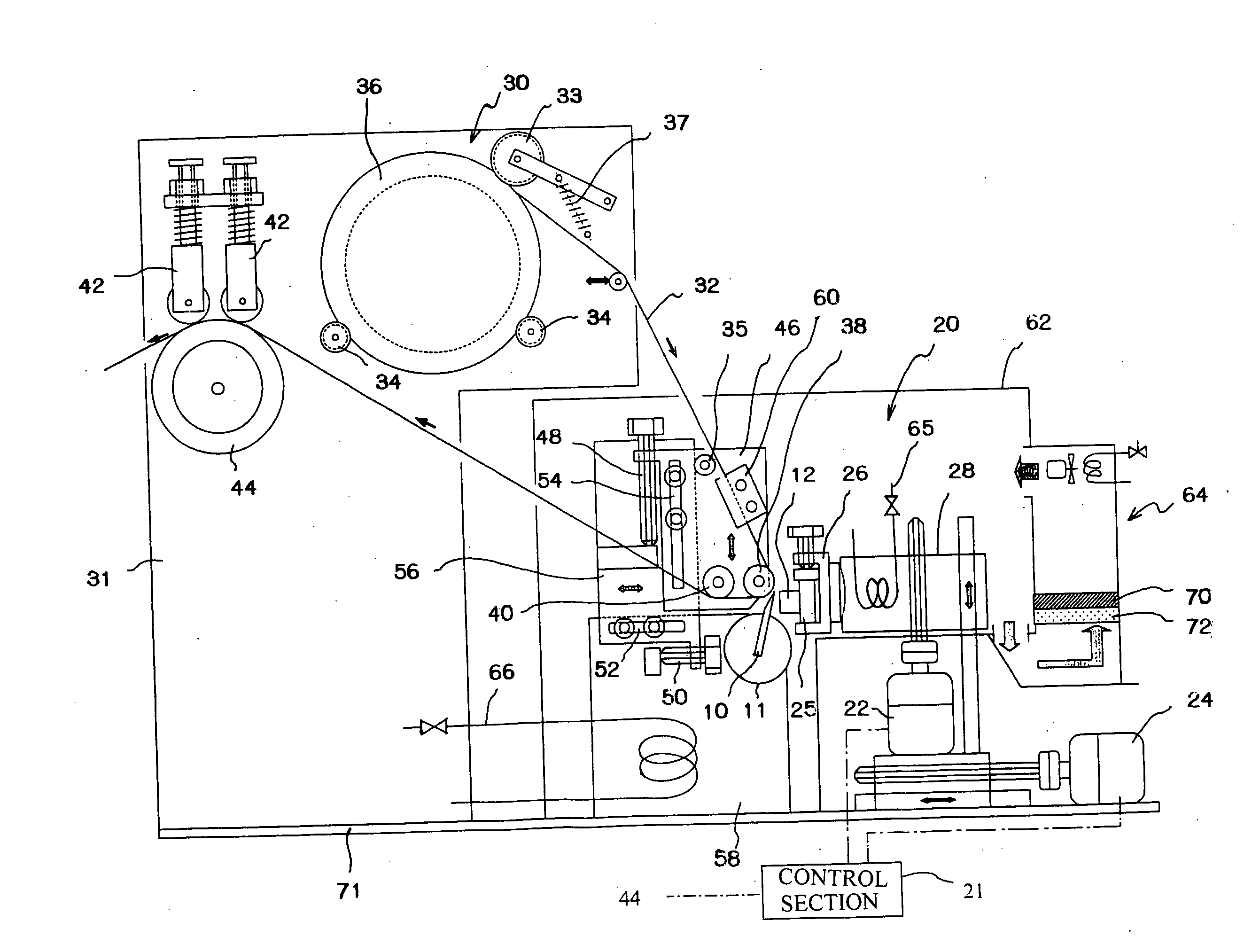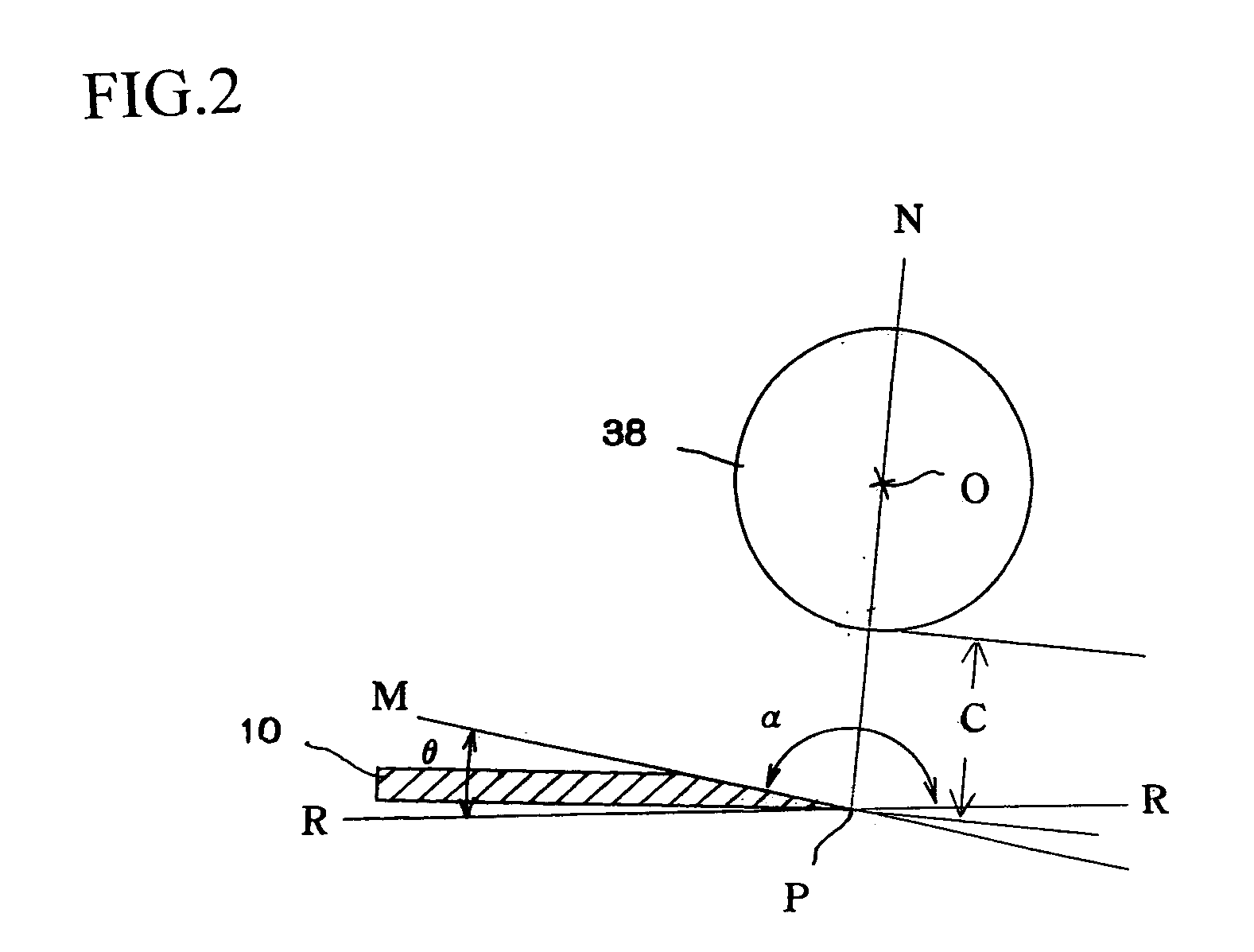Method and device for manufacturing tissue section
a tissue and manufacturing technology, applied in the field of tissue manufacturing, can solve the problems of difficult individual recognition, limited method, and risk of infection of frozen organism specimens, and achieve the effects of uniform thickness, easy individual recognition, and stab manufacturing
- Summary
- Abstract
- Description
- Claims
- Application Information
AI Technical Summary
Benefits of technology
Problems solved by technology
Method used
Image
Examples
experiment 1
[0105] In the device shown in FIG. 1, the tissue sections 16 were made by slicing the frozen organism specimen 12, which was cut off from a pig lung, liver or muscle.
[0106] The tape 32 used in the device shown in FIG. 1 was the transparent film tape 32, which was made of cellulose acetate and whose width was 24 mm; the organism specimen 12 was made by the steps of: cutting a piece off from a pig lung, liver or muscle; embedding the cut piece in carboxymethylcellulose as an ice crystal-inhibitor, and freezing the embedded piece.
[0107] The frozen organism specimen 12 was fixed to the jig 25, on which carboxymethylcellulose was applied, then the jig 25, to which the frozen organism specimen 12 had been fixed, was fixed to the clamper 26 of the holding section 28. The cylinder 11, to which the knife 10 was attached, was turned until the angle θ (see FIG. 2) between the slicing surface of the frozen organism specimen 12 fixed to the holding section 28 and the cutting surface of the kni...
experiment 2
[0113] In this experiment, the speed of slicing the tissue sections 16, whose thickness was 5 μm, was 60 times / minute, but other conditions were the same as those of the experiment 1; the ratio (Vt / Vs) of the running speed (Vt) of the tape 32 to the moving speed (Vs) of the holding section 28 was 0.9 as well as the experiment 1. Front ends of some tissue sections 16 were broken, but they were usable as microscopic samples.
experiment 3
[0114] In this experiment, the distance C shown in FIG. 2 between the close roller 38 and the frozen organism specimen 12 (see FIG. 2) to 2 mm, but other conditions were the same as those of the experiment 1. Marks existed in some tissue sections 16, but they were accepted.
PUM
| Property | Measurement | Unit |
|---|---|---|
| temperature | aaaaa | aaaaa |
| temperature | aaaaa | aaaaa |
| melting point | aaaaa | aaaaa |
Abstract
Description
Claims
Application Information
 Login to View More
Login to View More - R&D
- Intellectual Property
- Life Sciences
- Materials
- Tech Scout
- Unparalleled Data Quality
- Higher Quality Content
- 60% Fewer Hallucinations
Browse by: Latest US Patents, China's latest patents, Technical Efficacy Thesaurus, Application Domain, Technology Topic, Popular Technical Reports.
© 2025 PatSnap. All rights reserved.Legal|Privacy policy|Modern Slavery Act Transparency Statement|Sitemap|About US| Contact US: help@patsnap.com



